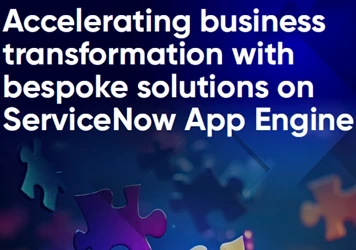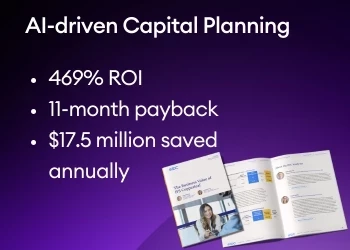The goldmine in our pockets: How telecommunications companies are monetizing Big Data
Add bookmarkTelecommunications companies are racing to figure out how to make money from the vast quantities of data their subscribers generate every day. But to really strike gold, does the industry first need to understand that this requires a radical reinvention of their business model?
The first mobile phone in our family was one of the original 1980’s Motorola Bricks. The phone was the size of a pint of beer and the battery pack to which it had to be hooked up to at all times was closer to the size of a keg (and about as heavy).
[EventPDF]
It had no camera, no maps, no apps, no e-mail, no calendar, no clock, no alarm, no texts, no music, and no video recorder. It did nothing other than make and receive phone calls (although it didn’t do the latter very well as the battery didn’t last long so my mom never turned the phone on unless she planned to use it for an outbound call).
But, for the time, it was revolutionary.
Fast forward a couple of decades and anybody born after the fall of the Berlin wall would likely be stunned at the primeval state in which we lived before the advent of ubiquitous internet cat videos and the ability to share photographs of our latest meal with everyone we’ve ever met.
Cat videos and food photos aside, there is a quiet revolution taking place in the telecommunications industry. Maps, apps and services are now an integral part of our lives; the number of smart phone users alone is expected to reach 1.75 billion by the end of this year, according to figures from e-Marketer.
Those phones don’t just make our lives easier. They are also constantly transmitting data about our habits and behavior. And although they’ve been sitting on a deluge of data for a while now – in the form of information about calls, app downloads/usage, web browsing history, geo-positioning data, billing records, social network posts, and network performance - telecommunications companies are waking up in a big way to just how valuable that data can be.
"We have tons and tons of data. There are several terabytes of data flowing through our network per day from various data sources," says Anand Arivukkarasu, Senior Product Manager, Pinsight Media+ (a subsidiary of Sprint). "This data is taken through strict privacy, content filters, anonymization processes and aggregated as per our policy and promise to our customers."
Data on this scale is presenting huge opportunities giving telecommunications companies access to information that was previously either very labor-intensive or impossible to collect.
Now, advanced computer processing power has collided with widespread penetration of smart phones and other telecom services, so that vast amounts of data are collected automatically. With clever analysis, the insight that can be gleaned has huge implications for everything from understanding traffic patterns to consumer buying habits.
"In the past, you either had to look at snap shots or pick random samples," says Joseph Arsenault, Senior Manager at Time Warner Cable. "Now you can look at everything and draw discrete and concrete conclusions."
The insights can be broadly characterized as the following:
#1: Geo-Spatial Insights:
Trends in subscribers’ whereabouts can help traffic and city planners with traffic flows (understanding peak times, historical analysis of the impact of big events, etc.), retailers (how many people visited a certain shopping center? How much footfall does a competitor get?) and more. Mobile phone companies have already started developing partnership with third parties such as software developers to crunch the data in interesting new ways. For instance, software developer AirSage works with 2 of the 3 largest US telecommunications companies and has developed an algorithm that looks for patterns in the location data of users’ mobile devices to help transportation planners and traffic reports.
#2: Customer & Behavioral Insights:
Information about how a subscriber uses a particular service or analysis of their viewing habits can be used internally by the telecommunications company themselves to improve customer retention, reduce churn and provided targeted products and services to specific customer segments. With much of the telecommunications market at or near saturation point, companies that can provide enhanced services/products based on a real understanding of their customers will attain competitive advantage.
Additionally, telecommunications companies can provide those insights to third-parties giving them important new streams of revenue. Spain’s Telefonica, for instance, worked with British supermarket chain Morrisons to study where the company’s shoppers came from in order to more accurately identify who should receive promotional offers. As a result of Telefonica’s recommendation, Morrisons sent out 400,000 vouchers leading to 150% rise in store visits.
Pinsight+ Media, a division of network operator Sprint, on the other hand, has taken the concept one step further and offers targeted mobile advertising directly to brands. Advertisers can select demographics and interests of users they would like to get in touch with to send users targeted offers.
#3: Operational Insights:
The explosion of data and the ability to analyze what’s happening in real-time has given telecommunications companies unprecedented ability to understand exactly what’s happening in their business. Whether it’s network performance, predicting service outages or learning to anticipate peak loads, use of big data in telecommunications companies can help them improve decision-making, identify opportunities for efficiencies and enhance service delivery to customers.
At the end of the day, though, the real opportunity for telecommunications companies lies in using the data to offer new products and services – or improve existing ones.
"We talk about big data as a conceptual thing but if you don’t operationalize that in terms of driving revenue, it’s just academic," says Time Warner Cable‘s Joseph Arsenault. "How can you use it to drive value? Reduce churn? Improve customer retention? That’s a tangible monetized win."
Network provider Verizon sees the industry as a whole shifting towards the provision of data services as the market’s traditional bread and butter businesses reach penetration point or are in decline (in the case of wired telephony services):
"Verizon's most dramatic growth in recent years has occurred in the wireless market. With the wireless voice market near saturation at 95 percent penetration, this growth is shifting towards mobile data. In 2010, data accounted for 35.1 percent of wireless service revenues, compared to 29.9 percent in 2009."
But, cautions global consultancy Deloitte in a report, too many companies focus their big data strategies on "answering existing questions in existing businesses, with a focus on improved efficiency and operations." This includes using big data for operational efficiency or to identify ways to reduce customer churn. In other words, it’s using big data to tweak the existing business model rather than radically reinvent it.
Instead, the report authors argue, "big data 2.0 strategies can open up new markets, providing leading businesses with small windows of opportunity within which to reap significant benefits that their competitors have yet to identify."
That sentiment is echoed by Prateek Jain, Director of Engineering at eHarmony who says that telecommunications companies should take that thinking one step further and look at how they can create new products that leverage their data. This involves a radical departure from thinking about themselves as telecommunications companies and instead thinking of themselves as application developers.
"Things like Google Maps or Uber could have been built by telecoms companies if they were willing to enter the applications space," he says. "They have all the data, they have all the infrastructure – it is a matter of being an early adopter and taking more risk."
Jain says that telecoms companies should look at opening up their data to enable application developers to create new services by creating API's that allow easy access to this data.
Several telecommunications companies are trying to do just that. American network operator AT&T, for instance, has opened up some of its data and services to software developers to allow them to create innovative new services and apps. The company holds programming contests and Jon Summers, AT&T’s senior vice president of growth platforms, was quoted in 2012 as saying that AT&T offers 79 APIs that process five billion "calls" each month (each call is a request from an outside program for data) – a dramatic increase from an average300 million calls per month in 2009.
Meanwhile, network provider Sprint is taking a slightly different approach. The company set up Pinsight Media+ in 2012 as a stand alone unit to focus on using data that can be externally monetizable like mobile advertising, mobile analytics, m-commerce, and other new technologies.
"This allows us to behave like a start up with speed and agility," explains Anand Arivukkarasu, Senior Product Manager at Pinsight Media+.
Just like a real gold rush, though, it will likely take some time to hit the lucky strike.
"We know there’s a lot of value to this data but the market is still largely unexplored," says Pinsight Media+’s Anand Arivukkarasu. "A lot of people are seeing the value in the insights that we build. But how do we build a business on that is a big question."
And that’s the thing with a gold rush though: if you don’t look, you’ll never find those nuggets of gold.
Want to learn more about strategies for monetizing Big Data? Join companies like PinSight+ Media, TELUS, StubHub and eHarmony at the Monetizing Big Data Summit taking place this July in Las Vegas! Find out more at: https://www.bigdatanorthamerica.com























